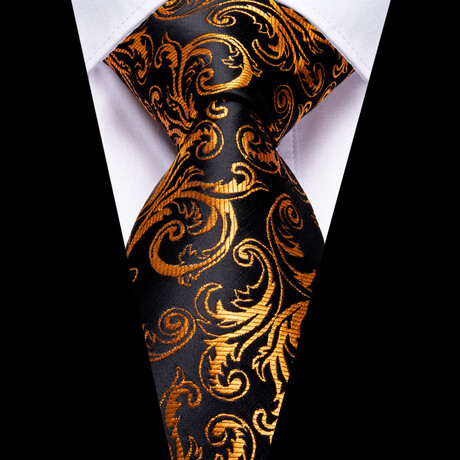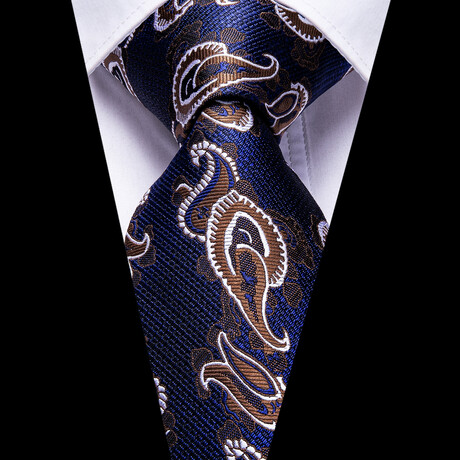When it comes to personal style, sometimes it’s as simple as ‘you don’t know what you don’t know.’
Were you aware that your shirt collar dictates what kind of tie you wear and what kind of knot to use? Knowing what tie goes with what shirt collar isn’t always second-nature. You’d need both hands to count all the different types of dress shirt collars that exist (as well as the best accompanying knots) so we’ve done the work for you, breaking down the most common types of collars and which knots to use with them.
Spread Collar - A spread collar can be worn with or without a tie, which makes it one of the more practical and versatile shirts for a guy to own. The "spread" represents the amount of space in between the two points of the turned down collar flaps. The nice thing about a spread collar is that it can be worn with or without a tie. Narrow to medium-spread collars adapt well to the Half Windsor knot. The medium-size knot is sturdy, even, and triangular, and has the potential to create a subtle dimple.
English Spread Collar - Infinitesimally similar to the spread collar, but with a slightly wider space between the lapels, which handsomely accommodates wider knots. You could also rock this collar with a Windsor knot for a nod to classic British style.
Cutaway Collar - The cutaway collar is one of the widest of the spread collar varietals. The name takes after the fact that it looks like part of the collar was "cut away," leaving some serious spread. The cutaway collar begs for a full-size knot, making the full Windsor a go-to. Best worn with a wide spread collar to expose its substantial knot, the full Windsor knot is large and triangular, and stands up well to bigger guys or guys with larger necks. Depending on your neck size, you may require an extra long tie to accommodate the couple of loops and swoops that goes into this knot.
Forward Point Collar - Straight forward and to the point, in the true sense of the word. The more traditional choice when it comes to collars, the forward point leaves a narrow opening that can be worn with a variety of knots. If you're looking to ditch a tie, opt for a different collar. Otherwise, the forward point collar works well with the half Windsor knot or the four-in-hand knot, which is one of the easiest to master and the most well-known. This ever-so-popular and versatile knot is small, slightly asymmetrical and is slender without being too skinny. The four-in-hand is the perfect pairing to smaller, narrow spread collars or button down collared dress shirts. Easy to tie and easy to untie, this knot is also self-releasing. Thicker ties gravitate towards smaller knots to give the knot more girth, so if the tie you have in mind is on the thick side, go for the four-in-hand or the simple knot. Men with shorter necks will benefit from the length of this knot.
Button-Down Collar - A collar that every man should own, the button-down collar is casual yet elevated enough to be worn every day. The origins of the button-down collar come from the oxford shirt, a 19th century Scottish-made shirt made from a distinct oxford weave that was sporty and casual. The oxford shirt has collar points that attach to buttons on the shirt itself, hence the name. Today, the button-down collar can be worn alone or with casual suiting.
Club Collar - Also known as the golf or rounded collar, the club collar was once the symbol of exclusive membership, modeled after English boarding schools. The club collar reached its peak in the 1930s but has been brought back to life in recent years. The club collar can be worn alone or you can opt for a simple knot. As the name suggests, the simple knot is, well, simple and functional. The knot itself is small and slightly asymmetrical so it keeps things casual.
Wing Collar - This one is the collar that was built for bow ties. A wing collar has no turndown like a point or spread collar and only has two small "wings" that fold back on themselves. A bow tie doesn’t necessarily always have to be tethered to a wing collar, but if you’re rocking this kind of shirting, the bow tie is the only piece of neckwear that makes sense.
When you think about it, it’s a bit of a ‘chicken-or-the-egg’ scenario. Did the neckwear come first and influence collar construction, or vice versa? To be honest, we don’t spend too much time pondering that one. Like a rich bordeaux paired with a great filet mignon, sometimes two things just belong together.





